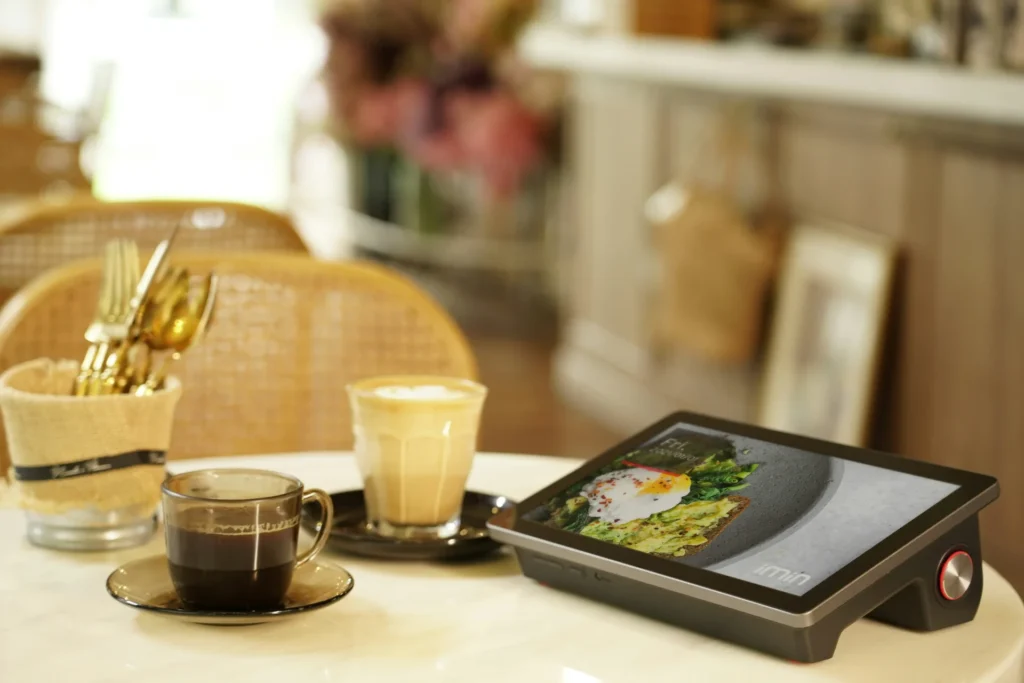Choosing the right receipt printer is harder than it looks. A bad choice leads to checkout queues, customer complaints, and constant tech headaches. This guide will solve that problem for you.
This is more than a "best of" list. I'll explain the core limits of Bluetooth, how to calculate the true cost of ownership (TCO), and provide a full troubleshooting guide. We'll cover everything from buying to daily use.

This guide is your complete resource. I've spent years helping businesses like yours set up their POS systems. I've seen the costly mistakes and the smart choices. My goal is to walk you through every step. We will start with the basics. Then, we will cover how to choose the right printer. Finally, I’ll share my top recommendations for 2025 and show you how to set them up and fix common problems. Let's make sure you get the perfect printer for your business.
Are you tired of messy ink cartridges and tangled wires at your checkout counter? A Bluetooth receipt printer might be the clean, simple solution you've been looking for.
A Bluetooth receipt printer is a device that prints receipts wirelessly from your POS device, like an iPad or computer. It uses thermal printing technology, so it doesn't need ink or toner. It connects using Bluetooth, making your checkout area tidy and mobile-friendly.
I'm reminded of a client's first pop-up shop. They used an old inkjet printer for receipts. One busy Saturday, the ink ran out right in the middle of a rush. It was a disaster. That's when I switched them to thermal printing, and they never looked back.
The magic behind these printers is heat. Unlike inkjet printers that spray liquid ink, thermal printers use a special kind of paper that changes color when heated. The print head has tiny heating elements that activate to create text and images on this heat-sensitive paper.
So, does a Bluetooth thermal printer need ink or toner? Absolutely not. This is one of their biggest advantages. You'll never have to worry about buying expensive ink cartridges or messy toner refills again. The only ongoing supply you need is thermal paper rolls. This makes them incredibly reliable and cost-effective for busy environments. Just make sure you're using thermal paper; it usually has a slightly shiny side, which is the side that gets printed on.
Think of Bluetooth as an invisible cable. It’s a wireless technology that lets devices talk to each other over short distances. For a POS system, this is incredibly useful.
Here’s how a Bluetooth POS printer works:
This all happens in a couple of seconds. The result is a fast, seamless printing experience without any physical connection between your POS terminal and the printer.
As mentioned, these printers don't use ink. Their only consumable is paper. But it's not just any paper.
A Bluetooth thermal printer uses a specific type of paper called thermal paper. This paper is coated with a chemical that turns black when heated. When buying paper, you need to look for "thermal receipt paper" and check two key specifications:
| Paper Specification | Description | Common Sizes |
|---|---|---|
| Width | This is the width of the paper roll. It must match what your printer model is designed for. Using the wrong width can cause jams or prevent printing. | 58mm (approx. 2.25 inches) or 80mm (approx. 3.15 inches). 80mm is more common for standard POS stations. |
| Roll Diameter | This is the diameter of the full paper roll. A larger diameter means more paper and less frequent changes, but it has to fit inside your printer's paper compartment. | Varies by printer model, but common sizes range from 40mm to 83mm. |
Always check your printer’s manual or specifications for the exact paper size it requires. Using the wrong paper won't just fail to print; it could potentially damage the printer mechanism.
Thinking a Bluetooth printer will solve all your problems with its wireless magic? Be careful. It's a perfect solution for some, but a total headache for others if you don't understand its limits.
A Bluetooth printer is ideal if you have a simple setup, like one checkout counter with one POS device. It offers great mobility and a clean, cable-free look. However, if you have multiple POS devices that need to print to one printer, you'll run into trouble. For that kind of multi-device environment, you would need a network-based solution like a Wi-Fi, or cloud printer.

This is the most important thing to understand about Bluetooth printers. A Bluetooth printer creates a direct, one-to-one connection with a device.
So, can multiple devices connect to one Bluetooth receipt printer at the same time? The answer is a clear no.
Imagine you run a busy coffee shop. You have two iPads taking orders. You cannot have both iPads connected to and printing from the same Bluetooth printer simultaneously. The first iPad that pairs with the printer "claims" it. The second iPad will not be able to connect until the first one disconnects. This limitation makes Bluetooth printers unsuitable for environments where multiple POS stations need to share a single printer. In my consulting work, this is the #1 mistake I see businesses make. They buy a Bluetooth printer for its simplicity, only to realize it can't handle their multi-terminal setup.
Choosing the right connection type is critical. It depends entirely on your business needs. Is a Bluetooth printer better than a Wi-Fi printer for a POS system? And what about a classic USB printer? Let's break it down.
Here’s a comparison table to help you decide:
| Feature | Bluetooth Printer | Wi-Fi/Ethernet Printer | USB Printer |
|---|---|---|---|
| Connection | Direct wireless link to one POS device. | Connects to your Wi-Fi router. Multiple devices on the same network can print to it. | Physical cable connection to one POS device or hub. |
| Best For | Mobile setups (food trucks, pop-ups), or single, fixed POS stations. | Busy environments with multiple POS terminals (cafes, restaurants, retail stores). | A single, stationary POS station where mobility is not needed. |
| Pros | Very easy to set up. No network required. Cable-free and portable. | Can be shared by many devices. Very reliable connection. | Extremely reliable and fast. Often the cheapest option. |
| Cons | Cannot be shared. Susceptible to interference from other Bluetooth devices. | Requires a stable Wi-Fi network. More complex setup. | Not mobile. The cable can be messy. Requires a physical port. |
A friend of mine runs a food truck. For him, a portable Bluetooth printer is perfect. He has one iPad, no network infrastructure, and needs to be mobile. But for another client with a multi-floor restaurant and five order stations, a Wi-Fi/Ethernet printer network was the only logical choice.
If a Bluetooth printer fits your "one-to-one" setup, it offers some fantastic benefits for your business.
Are you overwhelmed by the dozens of printer models available? Don't just pick the cheapest one. Following this checklist will ensure you buy a printer that works perfectly from day one.
To buy the right Bluetooth receipt printer, you must check POS compatibility first. Then, decide between stationary or portable models, consider print speed and paper width, and look for an auto-cutter. Finally, check durability, battery life (for portables), and the total cost of ownership.

This is the most important step. If a printer isn't compatible with your Point of Sale (POS) software, it's useless to you. Are Bluetooth receipt printers compatible with all POS systems? No, they are not.
Before you even look at a printer model, go to your POS provider's website (like Square, Shopify, Lightspeed) and find their "Hardware" or "Supported Hardware" page. They will provide a specific list of printer models that are tested and guaranteed to work with their system. Buying a printer that is not on this list is a huge gamble. I once tried to help a client save a few dollars by buying an "off-brand" printer. We spent hours trying to get it to work with their POS, but it never did. They had to return it and buy a supported model anyway. Don't make that mistake. Check the list first.
Your business environment dictates this choice.
Most stationary printers come with a built-in auto-cutter. When the receipt is finished printing, a small blade automatically cuts it cleanly. This is much faster and neater than the tear bars found on cheaper models or most portable printers. During a lunch rush, the seconds saved by an auto-cutter add up. It also prevents staff from ripping receipts unevenly, which looks unprofessional. For any high-volume business, an auto-cutter is a must-have feature.
If you're buying a portable printer, battery life is a critical feature. You need a printer that can last an entire shift without needing a recharge. Look for models that specify their battery life in hours or by the number of receipts they can print on a single charge. For example, the Epson TM-P20II boasts a battery life of up to 27 hours. Also, check the charging time. A printer that can charge quickly between shifts is a huge plus.
The initial price of the printer is only part of the story. The Total Cost of Ownership (TCO) gives you a much better picture of the long-term expense. How much does a Bluetooth printer for a POS system typically cost? The hardware itself can range from around $200 for budget models to over $500 for high-end, durable ones.
But what are the ongoing operational costs for a thermal receipt printer? The main cost is the thermal paper. To calculate your TCO, you should estimate your paper costs over a few years and add it to the hardware price.
Here's a simple TCO formula: (Printer Price) + (Avg. Receipts per Day × Cost per Receipt × 365 Days × 3 Years) = 3-Year TCO
Let's do an example:
TCO for Printer A: $250 + (100 * $0.02 * 365 * 3) = $250 + $2190 = $2440
TCO for Printer B: $350 + (100 * $0.015 * 365 * 3) = $350 + $1642.50 = $1992.50
As you can see, the initially more expensive Printer B is actually over $400 cheaper in the long run. Don't let a low sticker price fool you.
Excited to go wireless? Hold on. I've seen many business owners make costly mistakes because they rushed the purchase. Learning from their errors can save you a lot of time and money.
Here are the five most common pitfalls I've seen people fall into. Avoiding these will put you way ahead of the curve and ensure your investment works for you, not against you.
This is the cardinal sin of buying a POS printer. I mentioned it before, but it's so important it needs its own section here. A client once found a "great deal" on a printer online. It was a brand I hadn't heard of, but the specs looked good. They bought it without checking with their POS provider. We spent a full afternoon trying to make it work. It would pair with the iPad, but the POS software simply refused to see it. They wasted hours of business time and eventually had to buy a compatible model anyway.
How to avoid it: Before you add any printer to your cart, open a new tab and go directly to your POS provider's website (Square, Shopify, etc.). Find their supported hardware list. If the printer isn't on that list, do not buy it. Period.
This mistake happens in businesses that are growing. A small cafe starts with one iPad and one Bluetooth printer. Everything is great. Then they get busier and add a second iPad to take orders. Suddenly, they discover that only one iPad can be connected to the printer at a time. The staff has to constantly disconnect and reconnect, leading to chaos during peak hours.
How to avoid it: Think about your future needs. Do you plan to have multiple devices taking orders or payments? If so, a Bluetooth printer is not the right choice for a shared station. You need a Wi-Fi or Ethernet network printer that can be shared by multiple devices on the same network.
Trying to save $50 by getting a printer with a manual tear bar might seem smart, but it's a false economy for a busy shop. Imagine a line of ten people waiting for their coffee. With an auto-cutter, the receipt is printed and cut cleanly in a second. With a tear bar, the barista has to use two hands to tear the receipt, and it often rips unevenly. This slows down the line, looks unprofessional, and adds a tiny bit of stress to every single transaction.
How to avoid it: If you have or expect to have customer lines, consider an auto-cutter a non-negotiable feature. The small upfront cost is easily paid back in improved efficiency and a smoother customer experience. Most quality stationary printers include one.
The printer is a one-time purchase. The paper is a forever cost. Some business owners are so focused on the hardware price that they don't think about the cost of supplies. They might buy a cheap printer that requires an odd-sized or proprietary paper roll that is more expensive and harder to find.
How to avoid it: When choosing a printer, also research the cost and availability of its paper. Standard 80mm thermal paper is widely available and competitively priced. Also, look for printers with paper-saving features, like the Epson TM-m30III, which can reduce paper consumption significantly over time. Factoring paper costs into your TCO calculation is essential.
You've bought the printer. It arrives. You open the box… and you're stuck. Maybe the instructions are unclear, or it's not connecting properly. What do you do? If you bought from a random online seller with no support, you're on your own. Good brands and reputable dealers offer warranties and have customer support teams that can help you troubleshoot.
Even the best printers can have a bad day. Paper jams, connection drops, and blank receipts can happen. But don't panic. Most issues are easy to fix if you know what to do.
This section is your go-to guide for quick fixes. I'll cover everything from simple paper loading to resolving those frustrating "connected but not printing" moments. Let's get your printer back online.
How to load a paper roll into a Bluetooth receipt printer:
What do the flashing error lights on my receipt printer mean?
Why won't my Bluetooth receipt printer connect to my device?
What do I do if my Bluetooth printer is paired but won't print?
This is a very common problem.
What if my printer shows as "Offline" in the POS system?
This usually means the POS app has lost its connection. Force quit the POS app, then reopen it. If that doesn't work, follow the steps above for a printer that is paired but not printing.
Why is my receipt printing out blank?
The most common reason is that the thermal paper is loaded upside down. Thermal paper only has one heat-sensitive side. Open the cover, flip the paper roll over, and try again. Another possibility is that you are using non-thermal paper by mistake.
What causes faded text or poor print quality on a receipt printer?
Over time, dust and paper residue can build up on the thermal print head, causing faded spots or lines on the receipt. The solution is to clean it.
How do I fix a paper jam in a receipt printer?
Why won't my cash drawer open when it's connected to my receipt printer?
The cash drawer is triggered by a signal from the printer.
When all else fails, a factory reset can solve deep-seated configuration issues. This will erase all settings and return the printer to how it was out of the box.
Choosing the right Bluetooth receipt printer doesn't have to be complicated. By understanding your needs, checking compatibility, and knowing the key features to look for, you can make a smart investment.
